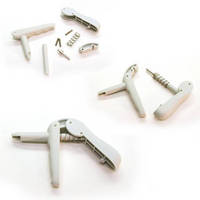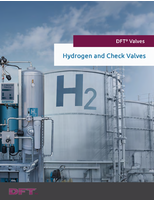Steps to Validation for Injection Molded Components

Validation processes can be daunting. Overcoming the hurdles to success can take a year for large scale systems. With robust validation systems and detailed product specifications, the process can be fast and efficient.
Partnering with experienced plastic injection molding manufacturers makes it possible to anticipate and plan for device production processes that meet all necessary regulatory, quality and commercial standards.
Reliable Approaches to Assembly Validation
In order to validate per ISO 13485 companies need to verify the device has appropriate manufacturing processes. Regulations 21 CFR Part 820, specifically sections 820.30 (g) and 820.75 (a) require medical device manufactures to validate both the design of the device and processes used to manufacture the device.
According to the standard, ISO 13485, section 7.5.2.1: says that organizations need to validate processes for production and services, especially where provisions affect resulting output that cannot be verified by monitoring and measurement after-the-fact.
In the past the FDA overlooked the validation of components manufactured by suppliers however, in the last few years; they have looked beyond the finished device manufacturer and many times have zeroed in on the validation of supplied components.
21 CFR 820 820.30 (g)
Reliable design validation, according to this mandate, needs to be performed within stringent conditions. Validation includes making sure devices conform not only to the user design needs, but also intended and simulated uses.
Validation can include software processes, design identification and thorough documentation of details such as signatures of individuals who are performing various stages of validation.
21 CFR 820.75 (a)
According to this regulation, when process results can't be verified, established procedures can be used. Manufacturers (and by default their suppliers) must properly documents validation activities. Since molded components are rarely 100% inspected for every feature on every manufactured component, process validation is the economical route for medical device compliance.
Manufacturers must maintain procedures for monitoring and controlling process parameters for validated processes. They must also ensure that validated processes are performed by qualified individuals. Revalidations may be required when processes and/or equipment are changed.
Reliable Results and Change Control Procedures
Evaluation of factors affecting product quality, automation equipment and product designs take place when constructing and undertaking any process validation phase or study.Â
Then validity of acceptance specifications needs verification. This is done with testing and challenging of products on a sound, scientific basis. Once specifications are clearly acceptable, it's important that changes to any specifications are in accordance with tightly documented change control procedures.
Understanding the nuances of phase and specification changes is critical to identifying project scope and being able to provide robust, detailed proposal requests for machinery builds.
Climbing Assembly Validation Ladders
The first step in the plastic injection molding process is to get to know the product inside and out. The study of product and component, assembly drawings, product testing and risk reports - needs to be completely understood.Â
Validation programs for plastic injection molding need to ensure workstations, machinery and automated processes are all functioning as required. Assembly validation ensures all of the components used to build a device are working properly.Â
Every plastic injection molding component requires specifications, every machine can have a different set of conditions.
Every component requires validation and qualification as well as accurate design controls with design validation. This means there also needs to be machine specifications. User Requirement Specifications (URS) should be thorough and clear.
Quality Product Overviews
•Â Operation requirements should define the capacity, process controls and user functions such as the skills, experience and training needed to use the product:
• Define environments in which the system will operate, include layout, room classifications, conditions, or any other special considerations.
• Define required functions of systems, data handling, set constraints and labeling of these requirements
• Define maintenance requirements for software and hardware.
• Document any deliverables
• Describe support activities required. This includes technical or training support.
Function Requirement Specifications (FRS) are delivered by vendors for describing function and mechanical law. The machine operates, providing a completed product. The FRS ties back to URS requirements.
Software Requirement Specifications (SRS) are vendor-delivered documents that list how software will engage inside the machine.
Software and hardware design specifications are print requirements for physical machine parameters. With all specifications defined in detail a master validation plan can be created.
• Test to guarantee quality for every step of the assembly process.
• Requirements include factory acceptance tests.
• Convert these documents to validation documents for a guarantee the machine meets every specification with all risks identified.
Contract manufacturers and machine vendors need to work closely and efficient transfers of knowledge occur. Validation begins at machine conception.
IQ, OQ, PQ
Installation Qualification (IQ) is done to be certain equipment is installed properly. Operational Qualification (OQ) is done to ensure that equipment performs as intended throughout all anticipated operating ranges. Performance Qualification (PQ) is done so ensure that equipment and/or processes are capable of consistently producing products/components that meet the intended function and quality levels.
Device verification testing also needs to confirm the process output. This happens in the form of finished devices compared against design specifications. Assumptions, lack of product knowledge and opinions will have adverse effects on outcome.
Form early partnerships with industry leading plastic injection molding device manufacturing experts such as Crescent Industries. Our professional employee-owned company ensures your devices meet every specification and function required, every time. Crescent has documented procedures and extensive experience for validating injection molding processes. Use our turn-key validation package to meet regulatory requirements for the validation of medical device molded components. For more information, please visit our website www.crescentind.com or call 1-800-411-3844.
Information for this article was cited from Developing Robust Assembly Validation published February, 2013, an MDDI article by Donavan Bigelow and Matt Norris, Quality Engineer Crescent Industries



